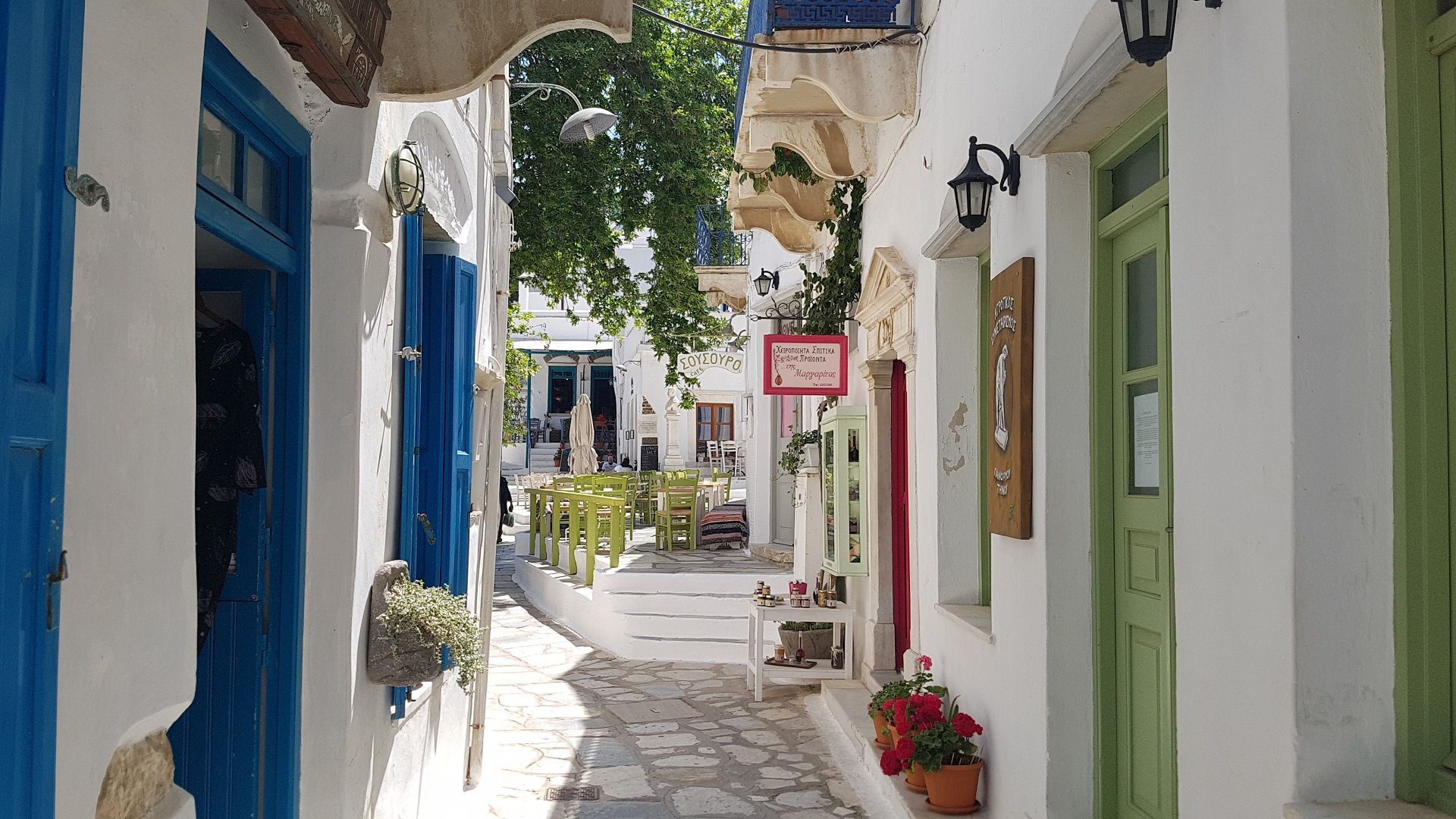What to do on Tinos
Villages like gems
Pyrgos, Kardiani, Ysternia, Ktikado, Triantaros-Berdemiaros, Falatados, Loutra, Tripotamos. The villages of Tinos are like ornaments decorating the island’s slopes and valleys. Walk among them, one by one: there is marble everywhere, in the squares, the skylights, in the fountains where you’ll cool off with a drink of water. Take a break at a traditional cafe under the shade of the sycamore trees and have a coffee or a bite to eat. There is always Tinian cheese, louza (smoked meat) and sweet raki on offer. Now that’s real hospitality!
Immortal Tinian sculptures
Legend says that Phidias taught the art of sculpture to the Tinians. And who’s going to argue with legend? At the museums of Tinos – The Cultural Centre of Tinos, The Museum of Marble Crafts and Tinian Artists in Pyrgos – you will admire immortal works of Neohellenic sculpture. Giannoulis Halepas, Dimitris Filippis, the Fitali brothers, Lazaros Sochos and Georgios Vitalis have all left their mark here. Learn the secrets of their art by taking classes at the marble sculpture workshops.
The famous dovecotes: every one a masterpiece
Peristeriones are typical to the Tinian landscape, and are some of the most impressive works of art in the Cyclades. There are over 600 dovecotes made of slate, stone and limestone and covered with lithographs. The pigeons and doves swoop around them, but you’ll need a trigger finger on your cameras to catch them in flight!
Tinos: the holy island of the Cyclades
Every year, on the 15th of August, thousands of believers descend upon Tinos, to accompany the procession of the miraculous icon. You can hardly make out the icon of Panagia Evangelistria, hidden as it is behind the numerous offerings that surround it. On their knees, pilgrims begin the ascent from the port to the church, overlooking Tinos town since 1880. Be a witness to this miracle of faith.
Volax: a lunar landscape in the Aegean
Surrounding the village of Volax is a surrealistic plateau with huge boulders. Like the abandoned toys of a playful giant. The round boulders of all different sizes are hundreds of years old. They are not meteorites, but down to the geological phenomenon of erosion. Experience the wild beauty of this lunar landscape, crossing the region of Kakovolo, from Falatado to Panagia Kaki Skala.
The peak of Exomvourgo
Some 640m above sea level, the mountain of Exomvourgo stands out among the island’s landmarks. At its base you will find the Catholic monastery Ieras Kardias (Sacred Heart), one of the most impressive attractions on the island. The fortress of Exomvourgo, at the peak, was once the highest in the Aegean, but it was besieged and destroyed by the Turks in 1715. From up high you can see not only Tinos, but also Samos, Ikaria, Naxos and Delos… breathe in the Aegean!
Source : https://www.discovergreece.com/

